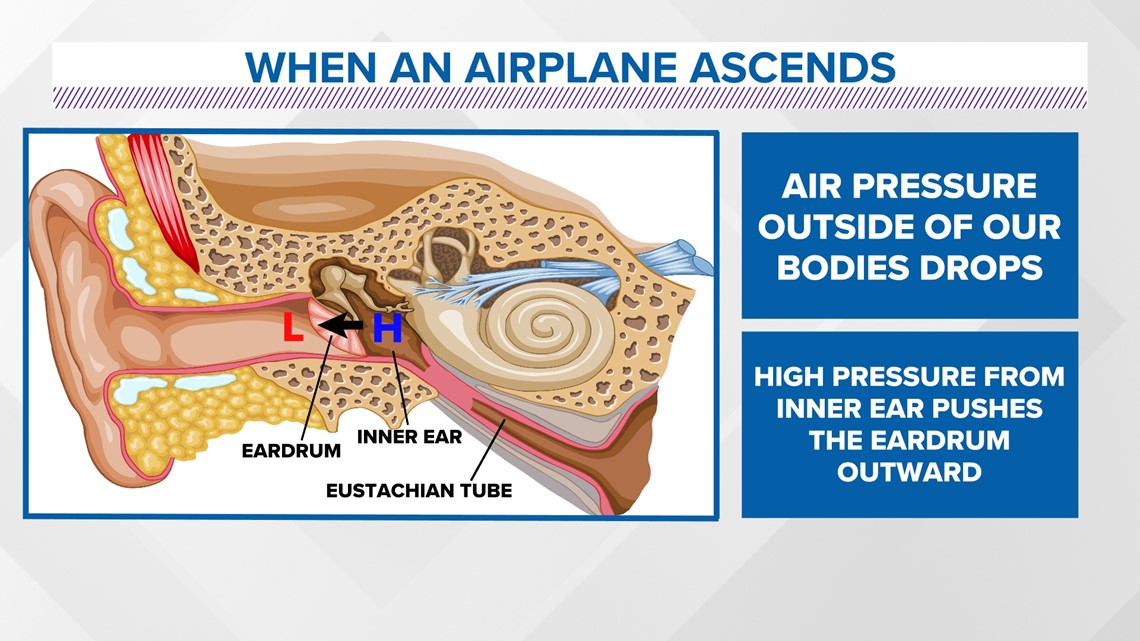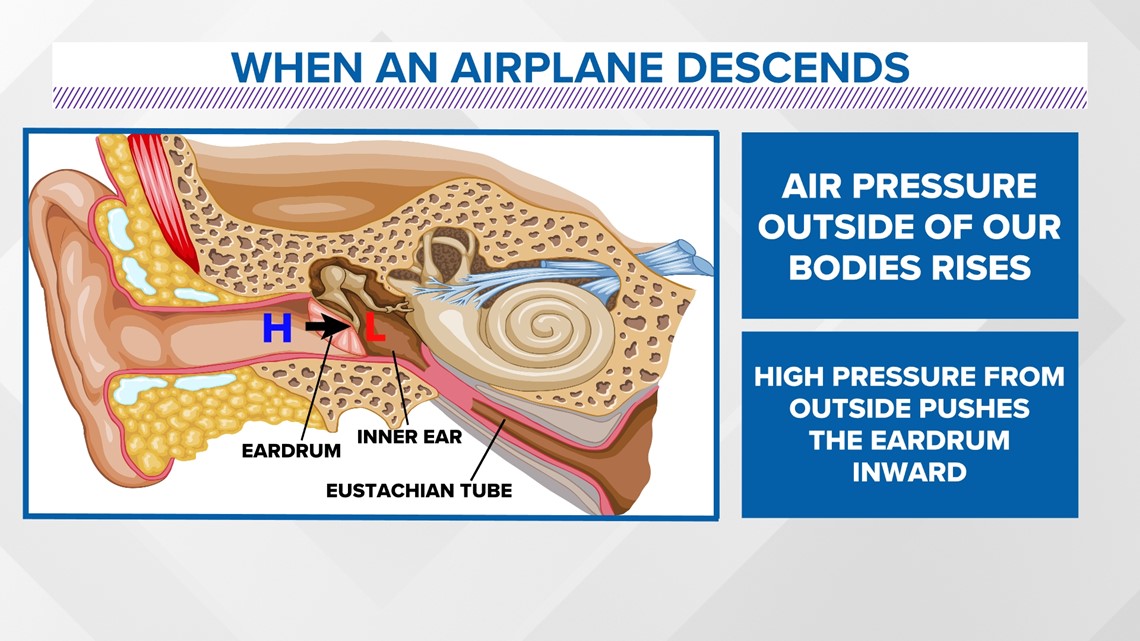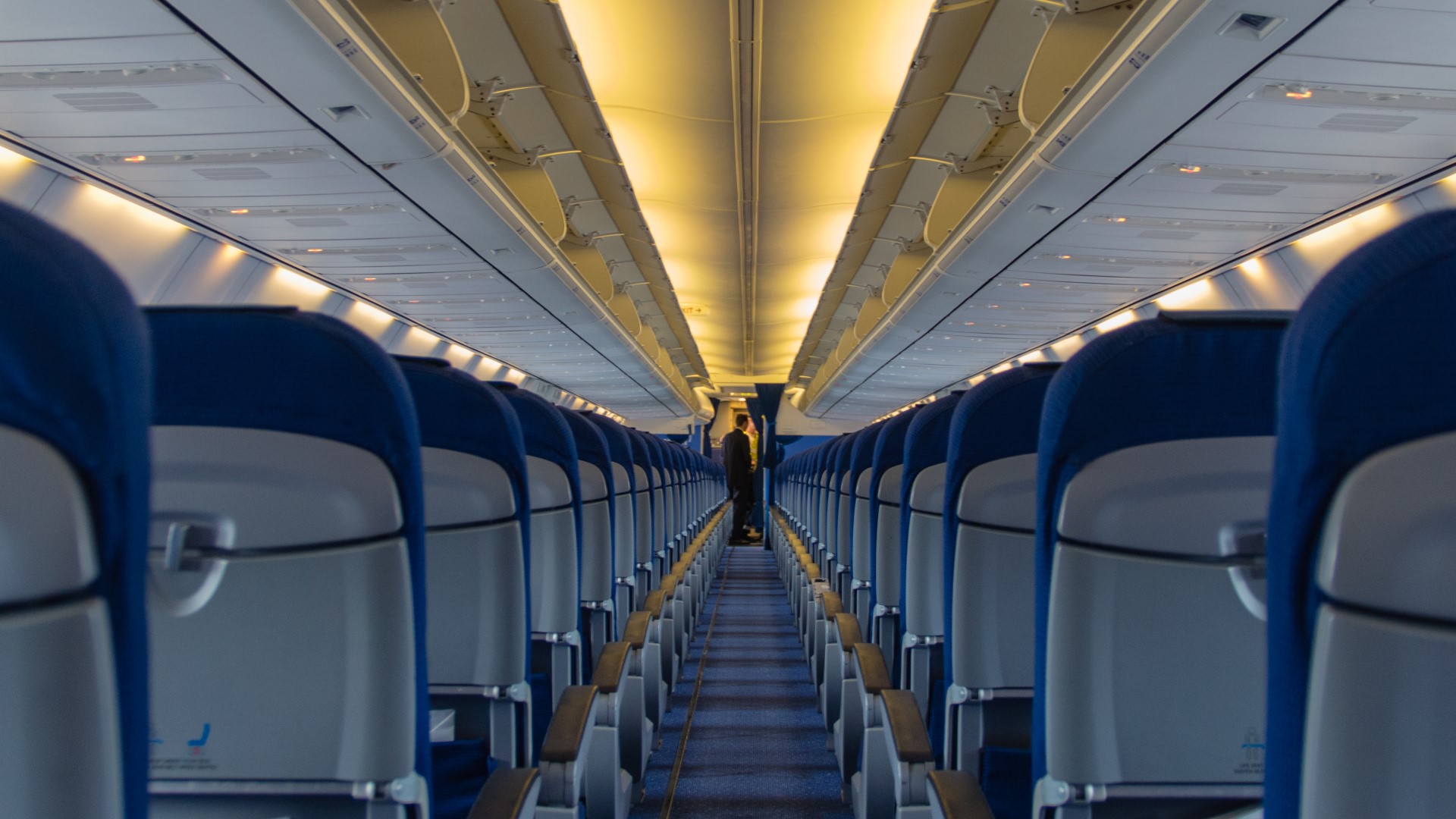DES MOINES, Iowa — If you have ever flown on an airplane, then you know that popped ears are often part of the experience.
Have you ever wondered why this happens? It all has to do with atmospheric pressure.
Pressure is essentially the weight of the atmosphere on any given point, which means the pressure in Earth's atmosphere is highest at the Earth's surface.
The higher in the sky you go, the lower the pressure gets.
Airlines try to acclimate passengers to these pressure changes by pressurizing the cabin, but that doesn't always do the trick.
So what's going on inside our ears when planes are ascending and descending?
As the plane rises, the air pressure outside of our bodies is dropping while the air trapped in our inner ear remains constant.
The higher pressure of the inner ear will push the eardrum outward which may cause discomfort or some hearing loss.




Related Stories
The opposite happens when a plane descends. The rising pressure outside our bodies pushes the eardrum inward toward the relatively low pressure of the inner ear.
Your body equalizes the pressure difference between your inner air and the surrounding atmosphere by allowing air to flow through the Eustachian tubes: small channels that connect the inner ear to the throat.
The "pop" you hear is the sound of the Eustachian tubes opening to equalize the pressure in your ears.
Doctors say yawning and swallowing are a couple of ways passengers can try to pop their ears and relieve the pain caused by the rapid changes in pressure.
► Download the We Are Iowa app
► Sign up for Local 5's "5 Things to Know" email newsletter
► Subscribe to Local 5 News on YouTube
Watch more Local 5 Weather Lab videos on YouTube

